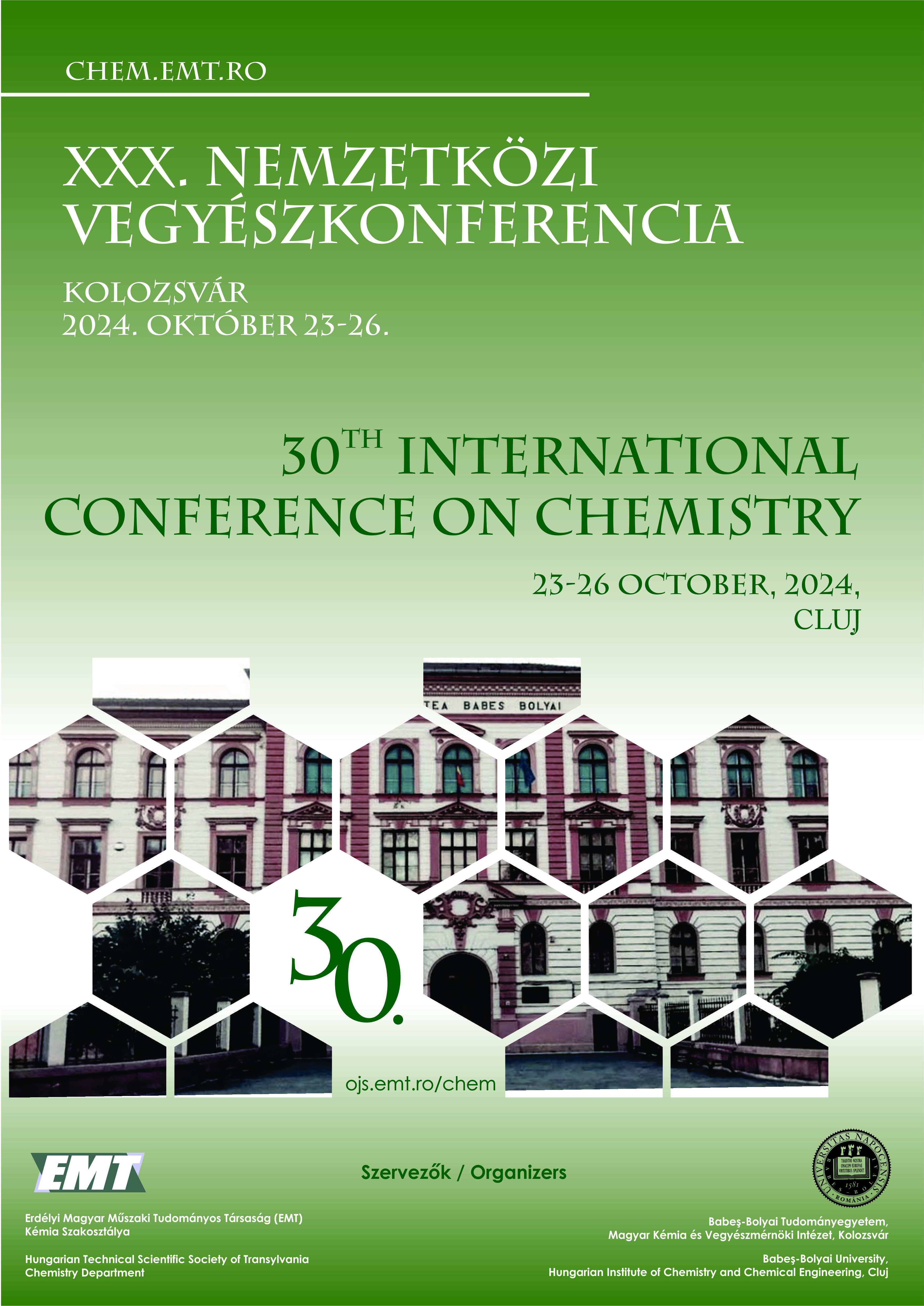Kationos pillérarénnal módosított grafénoxid szerkezeti és adszorpciós tulajdonságai
Kationos pillérarénnal módosított grafénoxid szerkezeti és adszorpciós tulajdonságai
Keywords:
graphene-oxide, pillararene, nanocomposite, adsorption, quenching, /, grafén-oxid, pillérarén, nanokompozit, adszorpció, kioltásAbstract
Graphene oxides are the most widely applied graphene derivatives primarily due to their ability to form stable aqueous suspensions. Macrocycle-modified graphene oxide systems retain the unique physical properties of graphene-based materials, as well as the ability of the macrocycles to form complexes with specific substrates. Pillararene/graphene-oxide hybrid systems are of particular interest. In course of my research, the spectroscopic and surface properties of cationic pillar[6]arene-modified graphene oxide have been studied applying various spectroscopic techniques (UV-Vis and fluorescence spectroscopy, FT-IR, Raman, XPS and DLS). The adsorption of a cationic fluorescent probe (Oxazine 1) and an anionic probe (Pyranine) on the surface of the modified nanoparticles have been investigated using fluorescence spectroscopy, via measuring the quenching of the emission of the fluorescent probe. The results serve as a basis for the development of new nanocomposite-based sensors.
ÖSSZEFOGLALÓ
A grafén-oxidok vizes szuszpenziókban való alkalmazhatóságuknak köszönhetően a grafén legsokoldalúbb származékai. A grafén-oxidhoz kapcsolt makrociklus rendszerek magukban hordozzák mind a nanorészecskék egyedi fizikai-kémiai tulajdonságait, mind a makrociklusok felismerőképességét. Különösen népszerűek a pillérarén/grafén-oxid hibrid rendszerek. A kutatómunkám során kationos pillér[6]arénnal módosított grafén-oxid nanokompozit anyagtudományi jellemzését végzem el spektroszkópiai módszerekkel (UV-látható és fluoreszcencia spektroszkópia, FT-IR, Raman, XPS, DLS), majd kationos (Oxazin 1) és anionos (Piranin) fluoreszcens próbafestékek adszorpcióját vizsgálom a módosított grafén-oxid nanorészecskék felületén fluoreszcencia spektroszkópia segítségével. A nanorendszeren történő adszorpciót fluoreszencia spektroszkópiával keveset vizsgálták, az eddigi eredményeink azt mutatják, hogy a fluoreszcencia kioltásán alapuló módszer az adszorpciós folyamatot közvetlenül, érzékenyen és pontosan jellemzi. Az eredmények hozzájárulhatnak hatékonyabb nanokompozit alapú szenzorok kidolgozásához.


